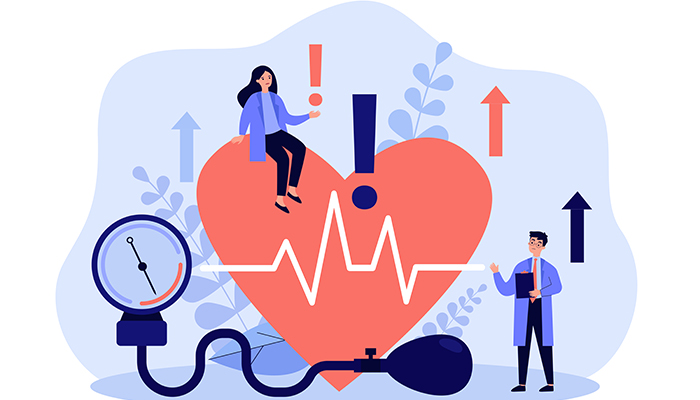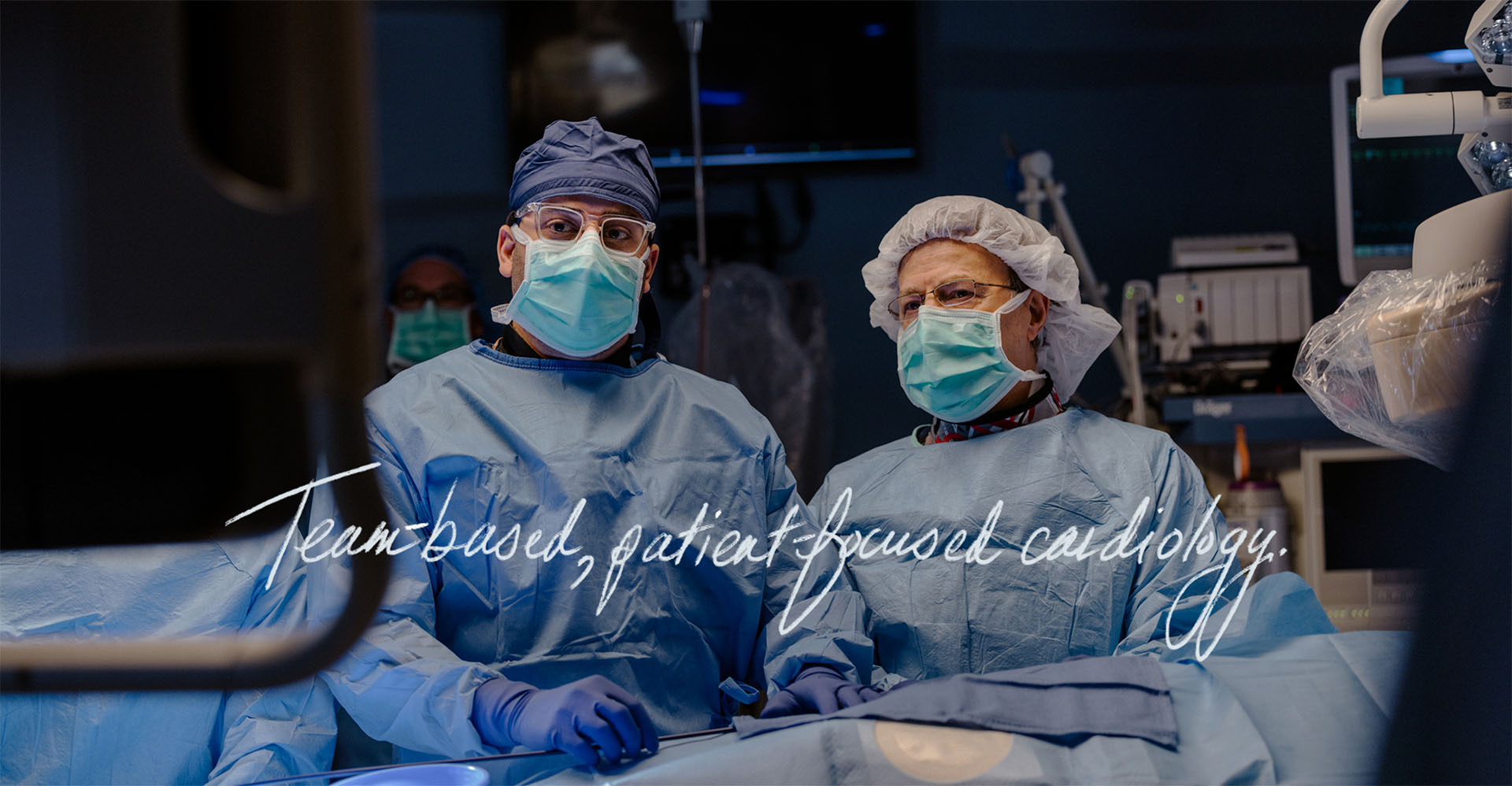Dr Garcia explains the link between stress and heart disease
Dr Garcia explains the link between stress and heart disease
Blog Article
Understanding the Relevance of Cardiology in Modern Health Care Services
Cardiology plays a crucial function in modern-day healthcare, particularly as heart condition continues to be the leading cause of mortality worldwide. Breakthroughs in diagnostics and treatment have actually transformed person care, enabling earlier interventions and improved results. The change in the direction of preventive cardiology encourages individuals to manage their health and wellness proactively. As modern technology proceeds to advance, the assimilation of ingenious services may additionally redefine cardiology's influence on public health and wellness, prompting a better exam of emerging patterns and their effects.
The Prevalence of Heart Problem and Its Effect On Public Wellness
Heart illness stays the leading cause of death internationally, its effect prolongs far beyond specific patients to impact public health systems and economic climates. The high occurrence of cardiovascular disease positions a considerable stress on health care resources, requiring increased financing for avoidance, treatment, and recovery programs. Public health campaigns need to deal with risk variables such as weight problems, smoking cigarettes, and sedentary way of livings, which contribute greatly to the rising incidence of heart conditions.Moreover, the economic worry related to heart disease is enormous, including not just straight medical expenses but also indirect expenditures associated with lost efficiency and early mortality. Communities encounter difficulties in handling these expenses, usually bring about variations in health care accessibility and end results. As the populace ages and lifestyle-related threats remain to intensify, the seriousness for reliable cardiology interventions becomes vital. Subsequently, dealing with heart disease is not only a matter of specific health but likewise a crucial public health and wellness top priority.
Advances in Cardiac Diagnostics and Imaging Techniques
Current advancements in heart diagnostics and imaging techniques have revolutionized the area of cardiology, improving the ability to discover and check cardiovascular disease. Techniques such as cardiac MRI, CT angiography, and echocardiography have actually become significantly innovative, offering thorough pictures of cardiac structures and functions. These techniques permit the very early recognition of problems like coronary artery illness, cardiac arrest, and valvular disorders.Moreover, advancements in non-invasive diagnostics, such as wearable modern technology and remote monitoring devices, have empowered people and doctor. These tools promote real-time monitoring of heart rhythms and various other essential signs, resulting in prompt treatments. In addition, expert system is being incorporated right into imaging analysis, boosting precision and effectiveness in medical diagnosis.
Advancements in Therapy Alternatives for Heart Conditions
Current innovations in cardiology have led to considerable innovations in therapy choices for heart disease. These consist of sophisticated medical strategies that improve step-by-step end results and arising medications that provide new avenues for therapy. As the field progresses, these innovations play a vital role in improving client care and outcomes.
Advanced Surgical Techniques
Innovations in medical methods have actually changed the landscape of cardiology, offering brand-new hope for clients with heart problems. Minimally invasive treatments, such as catheter-based interventions, have significantly minimized recovery times and health center stays. Techniques like robotic-assisted surgery improve accuracy, allowing specialists to browse intricate anatomical frameworks with better accuracy. Improvements in imaging innovation assist in real-time visualization during procedures, improving results. Transcatheter aortic valve replacement (TAVR) exhibits a development in treating aortic constriction, making it possible for valve substitute without open-heart surgical procedure. In addition, hybrid strategies that combine catheter-based and medical techniques provide customized solutions for different heart problems. These advanced surgical techniques not just improve client safety and security yet also increase treatment choices, underscoring the crucial role of innovation in modern cardiology methods.
Emerging Therapies and medicines
As the landscape of cardiology remains to progress, emerging treatments and drugs play a critical duty in enhancing therapy alternatives for heart disease. Technologies such as unique anticoagulants and progressed lipid-lowering representatives have actually changed the monitoring of cardio conditions, greatly lowering client morbidity and death. Furthermore, the development of gene treatments and regenerative medication provides encouraging opportunities for dealing with conditions formerly considered irreparable. Professional tests are constantly exposing the effectiveness of these treatments, pressing the limits of traditional therapies. The combination of electronic health and wellness technologies helps with customized medication, permitting for tailored therapy strategies based on genetic and lifestyle factors. Collectively, these developments underscore the dynamic nature of cardiology, improving patient end results and redefining criteria of treatment in modern medical care.
The Role of Preventive Cardiology in Client Care
Preventative cardiology plays an important role in person treatment by concentrating on the recognition of threat elements that contribute to heart disease. Via way of living modification techniques and early detection methods, health care suppliers can properly minimize the incidence of cardiovascular events - Dr Garcia. This proactive strategy not just enhances client outcomes but also promotes long-lasting wellness
Risk Variable Recognition
While heart diseases stay a leading root cause of morbidity and death worldwide, efficient threat element recognition functions as a cornerstone of precautionary cardiology. Determining risk elements such as high blood pressure, family, diabetes mellitus, and hyperlipidemia history is vital for early intervention. Healthcare experts utilize numerous evaluating techniques to examine these variables, permitting customized preventive procedures. Additionally, understanding a client's way of living choices, such as smoking and physical lack of exercise, further notifies danger evaluations. This detailed analysis allows clinicians to develop personalized care strategies intended at mitigating risks. By focusing on threat aspect recognition, healthcare systems can improve client end results and minimize the general concern of cardiovascular conditions, eventually adding to boosted public health strategies and source allowance.
Lifestyle Modification Methods
A plethora of researches highlights the crucial duty of way of living modification techniques in minimizing cardio disease risk. These methods incorporate nutritional adjustments, raised exercise, smoking cigarettes cessation, and weight monitoring. By taking on a heart-healthy diet plan abundant in fruits, vegetables, whole grains, and lean proteins, individuals can reduce cholesterol levels and blood pressure. Routine exercise enhances the heart and boosts general cardio health and wellness. Additionally, giving up find this smoking cigarettes substantially reduces the danger of heart illness and enhances recovery rates for those with status quo. Weight administration additionally contributes to cardio health and wellness by mitigating other risk aspects such as diabetes and high blood pressure. Implementing these way of life changes not just advertises private wellness yet likewise acts as a keystone of preventative cardiology in client care.
Very Early Detection Methods
Way of living alterations significantly contribute to decreasing heart disease threats, however they are most efficient when combined with early discovery methods. Preventive cardiology stresses the significance of recognizing prospective heart concerns before they rise into serious problems. Techniques such as high blood pressure surveillance, cholesterol screening, and progressed imaging innovations like echocardiograms play crucial duties in assessing cardio health. Biomarkers and hereditary screening also boost the precision of very early detection, allowing for tailored preventive strategies. Regular cardiac threat assessments encourage doctor to interfere proactively, potentially protecting against heart attacks and strokes (Cardiologist near me). By integrating these very early discovery methods into routine treatment, patients can take advantage of visit site prompt way of living interventions and targeted treatments, eventually improving and boosting end results quality of life
Integrating Innovation Into Cardiology Practices
As improvements in modern technology remain to reshape numerous fields, the combination of cutting-edge devices and systems right into cardiology techniques has actually become important for improving client treatment and results. Telemedicine systems allow cardiologists to check people from another location, boosting accessibility to care while lowering the burden on healthcare facilities. Wearable devices, such as smartwatches, enable continuous heart rate surveillance, alerting both clients and doctors to potential concerns in real-time. In addition, fabricated knowledge (AI) is being made use of to analyze large amounts of heart information, helping in early diagnosis and personalized therapy plans. Advanced imaging strategies, including 3D echocardiography, enhance visualization of heart structures, leading to extra specific treatments. Electronic health documents (EHRs) simplify individual information management, making certain that cardiologists have instant access to essential data. With each other, these technical developments are changing cardiology, advertising proactive monitoring and enhanced health outcomes for people with cardiovascular problems.
The Relevance of Client Education And Learning and Interaction
Client education and learning and engagement play an essential duty in the administration of cardio health. By furnishing people with understanding concerning their conditions, treatment alternatives, and lifestyle modifications, doctor equip people to take an active function in their treatment. This aggressive approach can cause boosted adherence to prescribed medications, nutritional changes, and exercise programs, inevitably reducing the risk of complications.Engagement likewise promotes a solid patient-provider partnership, encouraging open communication and depend on. When individuals really feel educated and included, they are extra most likely to voice concerns and ask questions, which can result in better scientific results. In addition, instructional sources, such as workshops or electronic systems, can boost understanding and advertise self-management methods. On the whole, focusing on client education and learning and involvement is important for improving cardiovascular health, improving lifestyle, and decreasing health care expenses related to heart diseases.
Future Fads in Cardiology and Their Possible Influence

Often Asked Questions
What Way Of Living Adjustments Can Minimize Heart Problem Risk?
The existing concern addresses way of life changes that can substantially minimize heart problem threat. Cardiologist near me. Adopting a balanced diet plan, taking part in routine exercise, preserving a healthy weight, taking care of anxiety, and staying clear of cigarette can notably boost cardiovascular wellness
Exactly How Can I Identify Early Indicators of Heart Issues?
Identifying early indicators of heart problems entails monitoring signs such as chest discomfort, lack of breath, tiredness, and uneven heartbeat. Timely recognition of these indicators can motivate necessary clinical evaluation and intervention for far better outcomes.
What Are the Differences In Between Cardiologists and Cardiac Surgeons?
The differences in between cardiologists and heart cosmetic surgeons hinge on their roles; cardiologists mostly handle and detect heart disease through non-invasive techniques, while cardiac specialists execute operations to remedy architectural heart issues. Each plays an important, distinctive duty.

Exactly how Frequently Should I Get My Heart Wellness Checked?
The regularity of heart checkup varies based upon private risk variables. Normally, adults should go through assessments each to 2 years, while those with status quo may call for even more frequent assessments as encouraged by health care specialists.
What Function Does Genetics Play in Cardiovascular Disease Risk?
Genes significantly affects cardiovascular disease threat, with familial patterns showing inherited problems. Particular genetics can predispose people to hypertension, cholesterol problems, and other cardiovascular troubles, highlighting the significance of hereditary screening in reviewing heart health. Heart illness remains the leading cause of fatality worldwide, its effect expands far past individual clients to influence public wellness systems and economies. Public health efforts must deal with threat factors such as weight problems, smoking cigarettes, and sedentary way of lives, which contribute substantially to the increasing incidence of heart conditions.Moreover, the financial problem associated with heart illness is enormous, encompassing not only straight browse around here clinical costs however likewise indirect expenditures connected to shed performance and premature mortality. Precautionary cardiology plays a crucial duty in individual treatment by concentrating on the recognition of threat factors that contribute to heart disease. Fabricated knowledge (AI) and machine discovering are enhancing diagnostics and client tracking, making it possible for very early discovery of heart conditions. The distinctions between cardiologists and cardiac specialists exist in their functions; cardiologists mostly identify and handle heart problems with non-invasive techniques, while cardiac doctors perform surgical procedures to correct architectural heart concerns.
Report this page